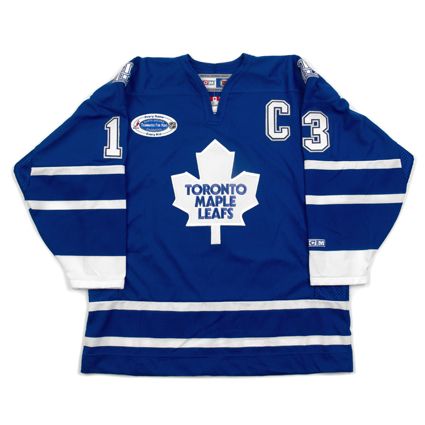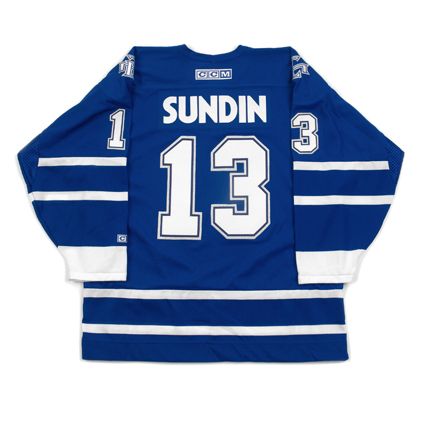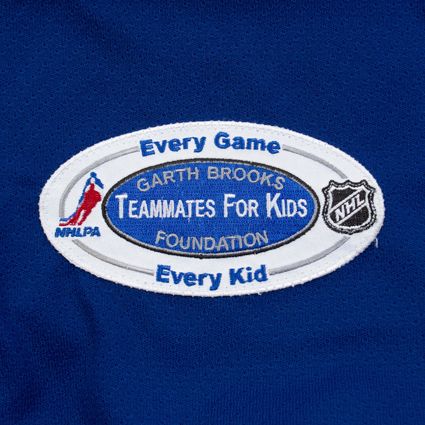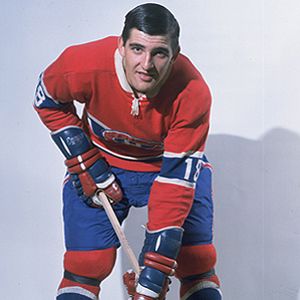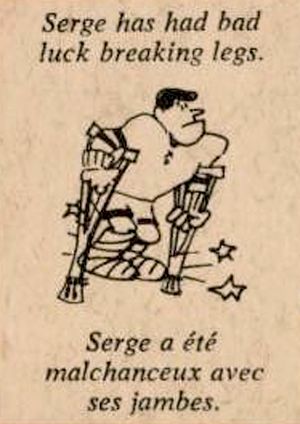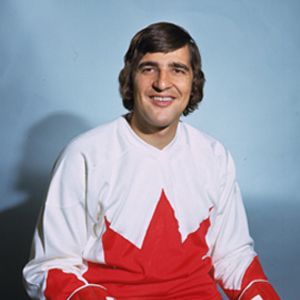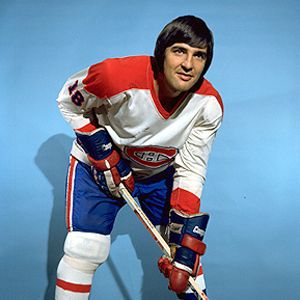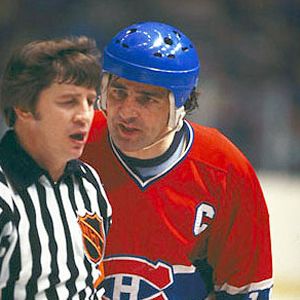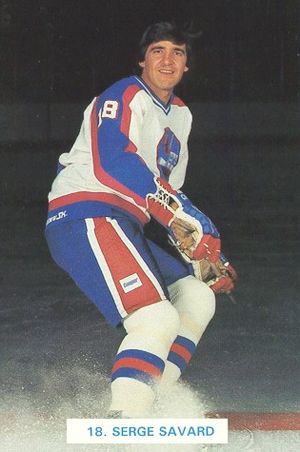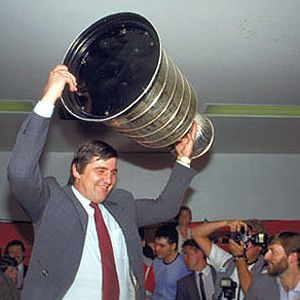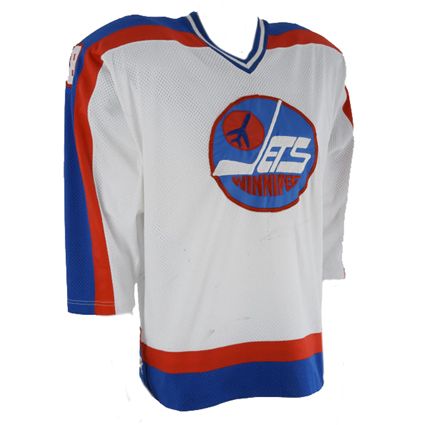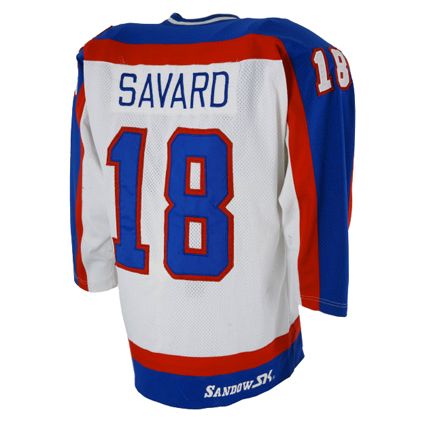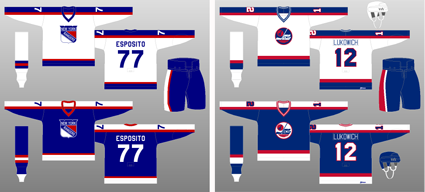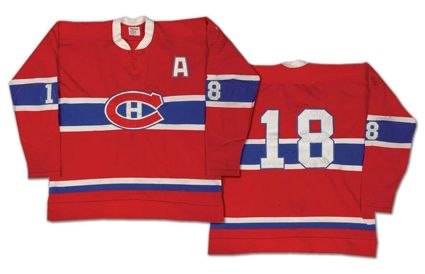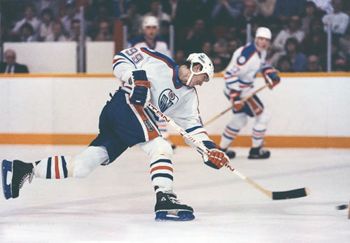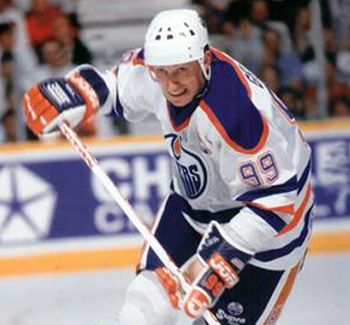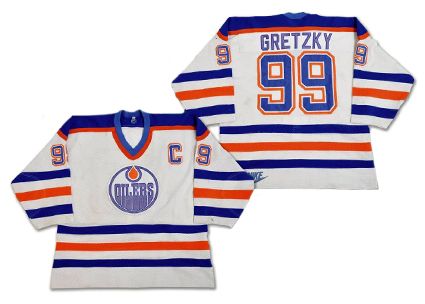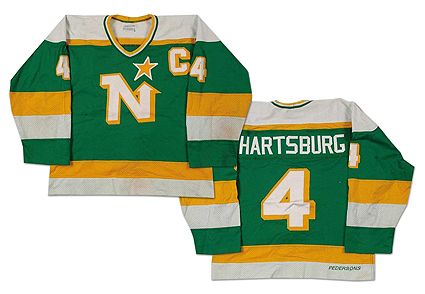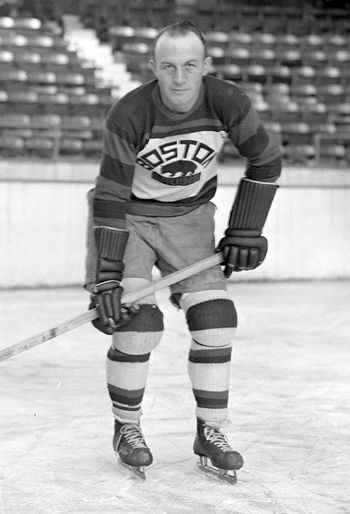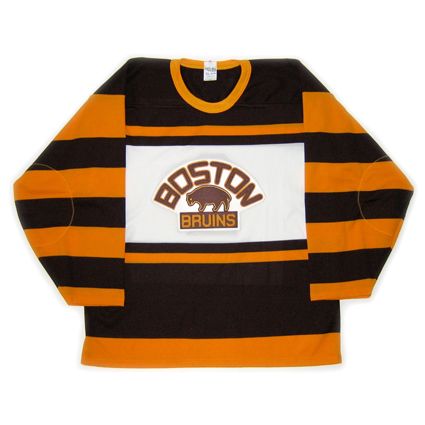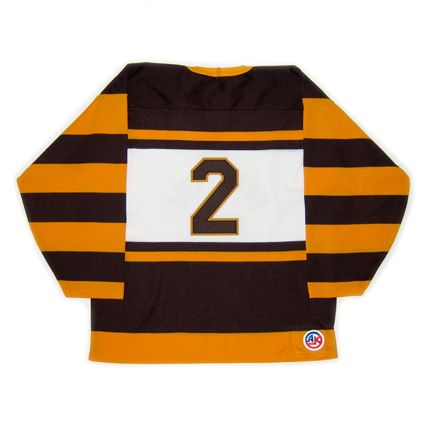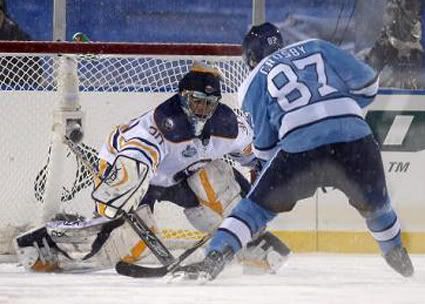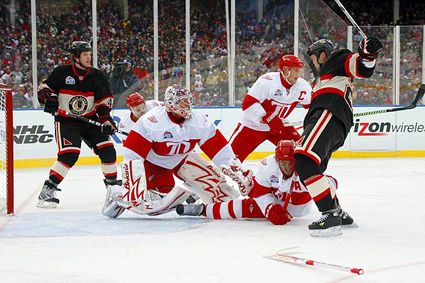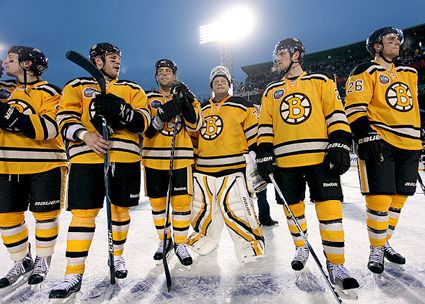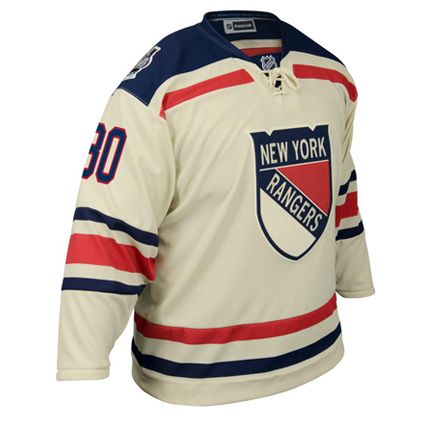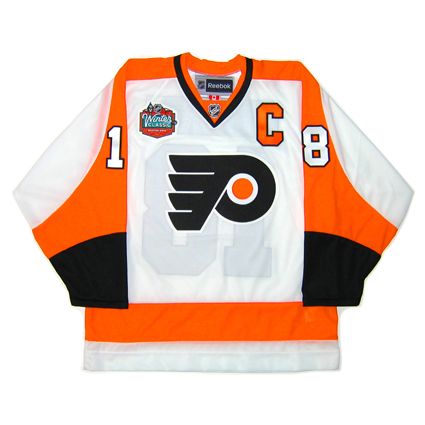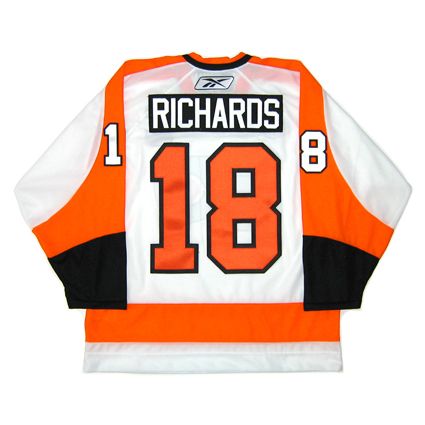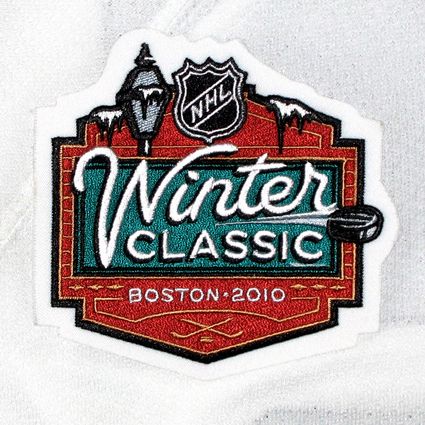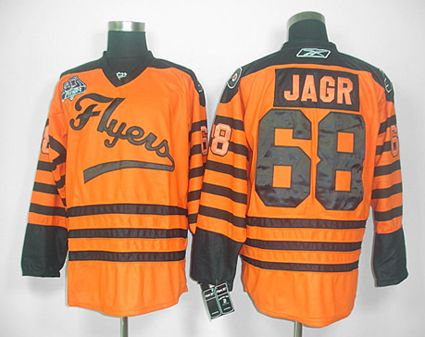Friday, January 6, 2012
2006-07 Toronto Maple Leafs Mats Sundin Jersey
On this date in 2007, the Toronto Maple Leafs participated in the Teammates for Kids patch program, during which every player in the NHL wore a Teammates for Kids patch on their jersey for one home game between January 4th and January 13th.
"This league-wide jersey auction highlights the level of commitment that the players, the NHLPA, the NHL and its Member Clubs have towards improving the lives of children," Garth Brooks said. "I'm very grateful to the fans who have supported this auction and children's charities."
All of the approximately 650 jerseys were then auctioned off for charity, with the patched Pittsburgh Penguins jersey worn by Sidney Crosby on January 7, 2007 selling for $12,131. In all, the auctions raised $385,730 with Sundin's jersey receiving the highest bids among the Maple Leafs at $1,608.
The Teammates for Kids Foundation was founded by country music star Garth Brooks in 1999 to contribute to nonprofit organizations that serve and benefit children. The concept has pro athletes contribute based on performances in games, such as $500 for each goal scored, which the foundation then triples. To date over $80 million has been distributed.
This was the third such program where NHL jerseys carried an additional patch for the purpose of being auctioned later on to raise funds for charity, following the Hockey Fights Cancer patches worn by only the team captains in January of 2001 and the NHL Cares patch worn at the start of the 2005-06 season to aid the victims of Hurricane Katrina which devastated New Orleans, Louisiana two months earlier.
Today's featured jersey is a 2006-07 Toronto Maple Leafs Mats Sundin jersey with the addition of the Garth Brooks Teammates for Kids Foundation patch as worn on January 6, 2007 in a 4-3 loss to the Buffalo Sabres.
The Maple Leafs changed to this jersey template of twin white stripes on the arms and waist back in 1992-93 following the positive reception of their Turn Back the Clock jersey worn during the NHL's 75th Anniversary season in 1991-92.
The 1992-93 jersey incorporated a vintage, multi-pointed maple leaf as the secondary shoulder patches. A new modern font for the name and numbers was first employed in 1997-98 and in 2000-01, the shoulder patches changed to a "TML" monogram became the secondary logo, as well as a change to a three color block font for the numbers, while the modern font for the names was retained.
The three color monogram and numbers saw the introduction of a third color to the Maple Leafs jerseys, a subtle silver outline. This was the first time since 1948 that a Maple Leafs jersey was anything other than blue and white, as the name "Toronto Maple Leafs" was executed in red on the main crest for three seasons in the late 1940's.
Today's first video is a look at the Teammates for Kids Foundation.
Apparently not everyone is a fan of Sundin.
Labels:
Sundin Mats,
Toronto Maple Leafs
Thursday, January 5, 2012
1982-83 Winnipeg Jets Serge Savard Jersey
Born to be a Montreal Canadien, Serge Savard was born in Montreal in 1946 and played his junior hockey for the Montreal Junior Canadiens from 1963-64 to 1965-66, where the defenseman's best season was a 47 point effort from 56 games in 1964-65.
The following season must have been a culture shock of the highest degree, as the French Canadian found himself in the Central Hockey League as a member of the Houston Apollos. Savard was named CHL Rookie of the Year when he scored 32 points in 68 games, but also stood his ground while being tested during his first season of professional hockey with 155 penalty minutes. He would never get half that many minutes again in his 17 year career. He would also make his NHL debut with Montreal with a pair of games that season as well as appearing in a single playoff game with the Quebec Aces of the AHL.
Savard would crack the Montreal lineup the following season and never return to the minors again. As a rookie in 1967-68, the season of the great NHL expansion, he registered 15 points in 67 games, including his first NHL goal. He would also get his first taste of playoff action, which was to become a regular part of his career going forward. Savard played in 6 of Montreal's 13 playoff games, as the Canadiens swept the expansion St. Louis Blues to win the Stanley Cup, earning the rookie his name on the cup for the first time.
With the confidence of a full season behind him now, Savard doubled his point total in 1968-69 with 8 goals and 23 assists for 31 points, but really shone in the playoffs, as he racked up 4 goals and 10 points in 14 games as Montreal rolled to a second consecutive Stanley Cup and Savard became the first defenseman to win the Conn Smythe Trophy as the MVP of the playoffs.
Savard raised his goal total to 12 and matched his point total with 31 in 1969-70, but the Canadiens missed out on the postseason due to losing a tiebreaker in the standings. Savard did however, play in his first NHL All-Star game that season.
He was limited to just 60 games over the next two seasons in part due to a severely broken leg which he later broke again, quite nearly the only blemish on his otherwise durable nature, as 12 times in 16 seasons he would play upwards of 64 games, with 9 of those being 71 or more.
Back healthy once again, Savard played first in the 1972 Summit Series against the Soviet Union, playing in 5 of the series 8 games, during which Canada won 4 and tied 1 as Savard likes to point out!
Savard then saw action in 74 games with the Canadiens, setting a new career high with 39 points but he really came alive in the playoffs with 11 points in 17 games as Montreal won the fourth Stanley Cup of Savard's career, as they also won the title in 1971 when Savard missed the majority of the season due to injury.
After a down year offensively, with just 18 points, Savard rebounded in 1974-75 with a career best 60 points coming from 20 goals and 40 assists, both also career highs.
The 1975-76 season saw Savard score 47 points and help Montreal earn another Stanley Cup. Before the next NHL season could get underway, Savard suited up for Team Canada again during the 1976 Canada Cup, which the Canadians would win.
Montreal was now in the midst of a dynasty, as they would win their second of four consecutive Stanley Cups in 1976-77, followed by their third and fourth in 1978 and 1979. Following the 1978-79 season, Savard was named the recipient of the Masterton Trophy for perseverance, dedication and sportsmanship. That season would also see Savard compete in the 1979 Challenge Cup, a series of games against the Soviet Union which was held in lieu of the customary all-star game.
Savard would play two more seasons with Montreal while serving as the team captain before briefly retiring until being convinced to return to the ice with the Winnipeg Jets, who desired his veteran leadership on their young squad.
Savard played 47 games on his return to the NHL in 1981-82, which saw a 48 point improvement in the standings for the Jets, and a 76 games in 1982-83, which included his 1,000th NHL game on this date in 1983, making him just the 45th player in league history to reach that milestone.
Savard was inducted into the Hockey Hall of Fame in 1986 and had his #18 retired by Montreal in 2006. He stayed active in the Canadiens organization, later spending 12 seasons as the Canadiens general manager, a time period which included two Stanley Cup championships.
Today's featured jersey is a 1982-83 Winnipeg Jets Serge Savard jersey. The Jets adopted a new jersey style upon their entry into the NHL in 1979-80 and continued to wear it for 11 seasons throughout the 1980's.
One unique element of this jersey is the extra thin font used for the names on the back.
The template for this jersey was actually originally used by the New York Rangers for two seasons under the management of John Ferguson. After being let go by the Rangers in 1978, Ferguson became the general manager of the Winnipeg Jets and reprised the exact same jersey template for the Jets beginning with their inaugural NHL season in 1979, with the only differences being the font for the name and numbers and, naturally, the team logo. The Jets would use this style all throughout the 1980's.
Bonus jersey: Due to the length of time Savard spent with the Canadiens and the eight championships clubs on which he played, it is only fitting to include a 1974-75 Montreal Canadiens Serge Savard jersey. from the year Savard set career highs in goals, assists and points, with 60. This jersey features a lace up collar and has the sleeve numbers contained within the blue arm stripe, which Montreal did from 1966 to 1978.
This particular style with the lace up collar and sleeve number placement was used from 1966-67 to 1974-75 until the Canadiens changed to a v-neck collar.
Notice the back numbers are not centered on the blue chest stripe, a common misconception with Canadiens jerseys.
Today's first video segment is the Legends of Hockey biography of Savard.
Next, is a tribute to Savard on the occasion of having his #18 retired by the Canadiens.
Here, Savard's #18 raises to the rafters later in the ceremony. Notice the current Canadiens players all wearing #18 Savard captain's jerseys with a special commemorative patch for the occasion.
Labels:
Montreal Canadiens,
Savard Serge,
Winnipeg Jets
Wednesday, January 4, 2012
1983-84 Edmonton Oilers Wayne Gretzky Jersey
17,498 fans filed into the Northlands Coliseum on this date in 1984 as the Edmonton Oilers were set to host the Minnesota North Stars. Grant Fuhr got the start for the Oilers, opposed by Minnesota's Don Beaupre.
At 2:07 into the game, Glenn Anderson got the scoring started with his 25th goal of the season on an assist from Mark Messier, with the goal coming at even strength. Wayne Gretzky extended the Oilers lead to 2-0 at 7:41 with his even strength goal from Charlie Huddy. It was Gretzky's 44th goal of the season, coming just two seconds after a North Stars penalty had expired.
With Dave Hunter in the penalty box for the Oilers, Minnesota got on the board when Dennis Maruk got his 10th of the season from Neal Broten and Dino Ciccarelli at 9:11.
With the feisty Gordie Roberts off for Minnesota, Edmonton restored their two goal lead when Jari Kurri scored a power play goal from Gretzky and Huddy at 15:20. Gretzky's assist extended his NHL record to 17 consecutive games with an assist, his 38th assist during the streak.
Two and a half minutes later, the North Stars struck back when Ciccarelli scored his 23rd goal from Maruk and Brad Maxwell at even strength at 17:55, still in the first period.
25 seconds later, Kurri would score his second of the period from Gretzky at even strength matched by Gretzky's second of the game 38 seconds later to make the score after just one period 5-2 in favor of the Oilers.
When the teams returned to the ice for the second period, Gilles Meloche had replaced Beaupre in the North Stars goal. Minnesota came out flying, determined to get back into the game, and in the blink of an eye, Ciccarelli has his second goal of the night from Maruk and Mark Napier at just 25 seconds. The North Stars then cut the Oilers lead to 5-4 when defenseman Maxwell netted his 12th of the season on a power play with Anderson in the box for the Oilers at 1:22.
Kurri completed his 7th career hat trick with his 38th of the year from Gretzky at 3:54, stemming the tide of the North Stars comeback - at least temporarily, as Steve Payne's 11th of the season from Broten and Willi Plett just 40 seconds later kept Minnesota within one at 6-5.
Just over three minutes later, Edmonton converted on the power play with Coffey's 20th from Gretzky and Messier at 7:31 with Brian Lawton off for Minnesota. The scoring binge subsided temporarily until the plucky North Stars got their fourth of the period from Brian Bellows, his 21st of the season at 11:27 from Napier and George Ferguson.
Taking a break from the scoring, Ken Linseman of Edmonton fought Napier at 11:50, followed by Randy Gregg's fight with Bellows less than a minute later at 12:30. Bellows received an extra minor, which put Edmonton on the power play, which they converted 16 seconds later as Gretzky completed his hat trick with his 46th goal from Anderson and Messier. The hat trick was the 24th of Gretzky's career.
Swede Willy Lindstrom joined the offensive fireworks at 14:59 from Messier and Kevin Lowe at 14:59 and Gretzky scored his 47th goal of the season, his fourth goal of the night and eighth point of the game with his goal from Messier and Kurri even strength at 17:23. Messier's fourth assist was his fifth of the game and he set an Oilers record with four coming in the span of the last 9:52.
The second period ended with the Oilers leading 10-6, thanks to their three consecutive goals to in the latter half of the period which gave them their largest lead of the night.
Despite giving up six goals, Fuhr stayed in the Oilers net for the third period thanks to the healthy Oilers lead, while the North Stars elected to stay with Meloche, as Beaupre likely wanted nothing more of the Oilers on this night.
Minnesota still had some fight left in them, as they struck back at 2:20 of the third with Keith Acton's 11th from Maxwell and Roberts, followed by Craig Hartsburg's 7th from Plett on the power play at 3:35 with Anderson back in the box.
Coffey got one back for the Oilers from Messier and Anderson at 7:10. It was Messier's sixth assist of the game. It would take over eight minutes for the next goal to arrive, the longest gap in scoring for the entire game. Gregg's 10th of the season came at 15:22 from Kevin McCelland and Pat Hughes to make the score 12-8 and send the media scrambling for their record books, as the goal was the 20th of the game, the most in the NHL since a a 21 goal game between the Toronto St. Patricks and Montreal Canadiens back on January 10, 1920 won by Montreal 14-7 nearly 64 years earlier.
With just over four and half minutes remaining, fans were hoping to witness history, but the record-tying goal never arrived, as the final stood at 12-8 despite a Minnesota power play at 17:01.
Of note, both teams had identical 12 shots on goal for each and every period, giving them 36 each for the game. Fuhr got credit for the win after making 28 saves on 36 shots, while Meloche took the loss after making 17 saves on 24 shots, while Beaupre made 7 saves on 12 shots.
This would prove to be the greatest night of Gretzky's career, with 8 points from 4 goals and 4 assists. He had one previous 8 point night earlier the same season back on November 19, 1983, which came on 3 goals and 5 assists.
Today's featured jersey is a 1983-84 Edmonton Oilers Wayne Gretzky jersey. The Oilers would go on to win the Stanley Cup at the conclusion of the season, and interestingly, each of the four times the Oilers would win the cup with Gretzky as captain, it would be at home in their white jerseys.
When Edmonton first entered the NHL in 1979 following the demise of the WHA, they changed the colors of crest of their jerseys but, aside from minor detail changes to fonts for names and numbers and some tweaking of shades of color, kept the same style for 17 seasons, which included their Stanley Cup dynasty of the 1980's.
Bonus jersey: Today's bonus jersey is a 1983-84 Minnesota North Stars Craig Hartsburg jersey. With the North Stars being 40% responsible for the 20 goals scored in their game with Edmonton on this date in 1984, it only seems fair to include them in today's entry.
This jersey was first worn in 1978, but this was the only season the Pedersons brand appeared on the rear hem of the North Stars jerseys, being replaced by a different local customizer the following season.
Oddly, in 1981-82, the North Stars added black to their home white jerseys in the form of a third black stripe to the waist, black cuffs on the sleeves and black outlines on their main crest and number in an effort to look tougher, but surprisingly chose to leave the green road jerseys as is, not adding the black to them until 1988, sticking with today's featured style some seven additional seasons.
Today's video selection are highlights from the offensive explosion which resulted in the most goals scored in over 60 years in the NHL.
Tuesday, January 3, 2012
1928-29 Boston Bruins Eddie Shore Jersey
From the Sports Illustrated Vault, the story "A Rough Time on the Road" by the great Stan Fischler originally published back on February 10th, 1964.
On January 2, 1929, the Boston Bruins boarded a night train to Montreal for a National Hockey League game there the following evening against the Montreal Maroons. As the train was pulling out of North Station, Art Ross, the Bruins' manager, walked through the Pullman sleeping car, counting the players. When Ross reached the last berth, he realized that one of them, Eddie Shore, was missing.
Eddie Shore
"Ross didn't know it," Shore said recently, "but I was then running down the platform trying to jump on the last car of the train. I didn't make it. I just missed the train because my taxi got tied up in a traffic accident coming across town."
Shore was determined to get to Montreal in time for the game. The Bruins were already shorthanded because of injuries, and Shore was well aware that Ross levied a $500 fine on any player who missed a road trip. Shore checked the train schedule and found that the next express to Montreal in the morning would not reach there until after the game had started. He learned that all the airline planes were grounded because of stormy weather. He was about to rent an automobile when a wealthy Boston friend offered to lend him a limousine with a chauffeur.
At 11:30 that night Shore and the chauffeur started the 350 mile drive over iced and snow-blocked New England mountain roads. It was sleeting, and in those days there were no paved express highways, no sanding trucks and no road patrols. The chauffeur drove very slowly through the storm. "I was not happy with the way he was driving," Shore said, "and I told him so. He apologized and said he didn't have chains and didn't like driving in the winter. The poor fellow urged me to turn back to Boston."
At that point the car skidded to the lip of a ditch. Shore took over at the wheel and drove to an all-night service station where he had tire chains put on. By then the sleet storm had thickened into a blizzard. Snow caked either side of the lone windshield wiper, and within minutes the wiper blade froze solid to the glass. "I couldn't see out of the window," says Shore, "so I removed the top half of the windshield."
His face was exposed to the blasts of the icy wind and snow but he managed to see the road. At about 5 A.M., in the mountains of New Hampshire, "We began losing traction. The tire chains had worn out."
Slowly, Shore eased the car around a bend in the road where he could see the lights of a construction camp flickering. He awakened a gas station attendant there, installed a new set of chains and weaved on. "We skidded off the road four times," he says, "but each time we managed to get the car back on the highway again."
The second pair of chains fell off at three the next afternoon. This time Shore stopped the car and ordered the chauffeur to take over the wheel. "I felt that a short nap would put me in good shape," he says. "All I asked of the driver was that he go at least twelve miles an hour and stay in the middle of the road."
But the moment Shore dozed off, the chauffeur lost control of the big car and it crashed into a deep ditch. Neither Shore nor the chauffeur nor the car suffered any damage so Shore hiked a mile to a farmhouse for help. "I paid $8 for a team of horses," says Shore, "harnessed the horses and pulled the car out of the ditch. We weren't too far from Montreal and I thought we'd make it in time if I could keep the car on the road."
He did and at 5:30 P.M. Shore drove up to the Windsor Hotel, the Bruins headquarters. He staggered into the lobby and nearly collapsed. "He was in no condition for hockey," says Ross. "His eyes were bloodshot, his face frostbitten and windburned, his fingers bent and set like claws after gripping the steering wheel so long. And he couldn't walk straight. I figured his legs were almost paralyzed from hitting the break and clutch."
Montreal's Windsor Hotel
Nevertheless, Shore ate a steak dinner, his first real meal in twenty-four hours, and refused the coach's orders to go to sleep. "I was tired all right," Shore says, "but I thought a twenty or thirty minute nap would be enough, then I'd be set to play."
An hour later Dit Clapper and Cooney Weiland of the Bruins entered Shore's room and shook him gently. Nothing happened. The rolled him over the bed and onto the floor. Still nothing happened. Weiland filled several glasses with water and poured them over Shore's face. This time he woke up and immediately insisted on playing.
Ross didn't want him to play. "I knew how durable he was," the coach says, "but there's a limit to human endurance. I finally decided to let him get on the ice, but at the first sign of weakness or sleepwalking I'd send him to the dressing room. I had to worry about him being groggy. What if he got hit hard and wound up badly hurt?"
The game was rough and fast. The powerful Maroons penetrated Boston's defense often, but Shore always helped repulse them. He smashed Hooley Smith to the ice with a vicious body check and drew the game's first penalty. Ross considered benching him at this point, but changed his mind. When the penalty had elapsed, Shore jumped on the ice and appeared stronger than ever. Shortly before the halfway point in the second period he skated behind his net to retrieve the puck. He faked one Montreal player, picked up speed at center ice and swerved to the left when he reached the Maroons' blue line. He sped around the last defenseman and shot. "I would say I was about fifteen feet out to the left," he says. "I can remember exactly how my shot went. It was low, about six inches off the ice, and went hard into the right corner of the net." The time of the goal was 8:20 of the second period. The Bruins led 1-0.
Shore still showed no signs of his ordeal during the third period (he had another two-minute penalty), and almost twenty-four hours after he chased the train down the North Station platform in Boston the final buzzer sounded. Apart from the two penalties, Shore had played the entire game without relief and, what's more, had scored the only goal of the game. Coach Ross never fined him for missing the train.
Shore would have an eventful 1928-29 season, as in addition to his heroic overnight drive through a raging blizzard, the Bruins would go on to win the first Stanley Cup of Shore's career after the Bruins won the American Division with a 26-13-5 record and go on to sweep the Montreal Canadiens 3 games to none before defeating the New York Rangers 2 games to none in what was oddly just a best-of-three final following the best-of-five semifinal!
The Stanley Cup Champion 1928-29 Boston Bruins
Shore would eventually survive his all-out style of play long enough to have a 14 year NHL career, during which he would receive 978 stitches, break his nose foureen times and his jaw five times as well as a hip, collar bone and his back. He would also win the Hart Trophy as the NHL MVP four times, the most of any defenseman, and win a pair of Stanley Cups, one in 1929 and the other coming in 1939. He would be inducted into the Hockey Hall of Fame in 1947.
Shore from the 1933 Sport Kings trading card set,
one of only three hockey players in the 48 card set
Today's featured jersey is a 1928-29 Boston Bruins Eddie Shore jersey. The Bruins were still using their original colors of brown and yellow, which came from the club's original owner Charles Adams' grocery store chain, First National Stores.
The Bruins wore a different style in each of their first two seasons before adopting this style in 1926. They would continue to wear this sweater for six seasons, including a Stanley Cup championship in 1929.
Today's video is a fifteen minute film on the career of Shore, a rich topic worthy of much more than we can provide here in this format.
Labels:
Boston Bruins,
Shore Eddie
Monday, January 2, 2012
2009-10 Philadelphia Flyers Mike Richards Jersey
Today is the sixth annual NHL Winter Classic, being held at Citizen's Bank Park in Philadephia, Pennsylvania, home of the Philadelphia Phillies of Major League Baseball.
The 2010 Winter Classic was held at the Boston Red Sox Fenway Park with the Boston Bruins hosting the Philadelphia Flyers. The Flyers scored first but the Bruins tied the game late in the third period to send the game into overtime where it was won by the Bruins' Marco Sturm to send the chilly home fans away happy.
The first Winter Classic was hosted in 2008 by the Buffalo Sabres, who were defeated in a shootout by the Pittsburgh Penguins in front of 71,217 fans who rejoiced in the cold weather and picturesque snowfall. The Penguins would wear baby blue throwbacks from 1968 while the Sabres would don jerseys based on their original 1970 jerseys.
The second annual Winter Classic in 2009 saw the Chicago Blackhawks host the Detroit Red Wings at historic Wrigley Field, home of the Chicago Cubs baseball club. Detroit would win the game by a score of 6-4 in front of 40,818. The Red Wings would go all the way back to the 1926 Detroit Cougars for the inspiration for their jerseys, worn during the first season of the franchise, while the Blackhawks would select the highly attractive jerseys worn in 1935 as their inspiration.
The 2010 Winter Classic was held at the Boston Red Sox Fenway Park with the Boston Bruins hosting the Philadelphia Flyers. The Flyers scored first but the Bruins tied the game late in the third period to send the game into overtime where it was won by the Bruins' Marco Sturm to send the chilly home fans away happy.
The Bruins sweaters combined different elements from their past, including their original brown and gold colors worn from 1924-1934, the original style "spoked B" logo first worn in 1949 and a lace up collar which first appeared on a Bruins jersey in 1967. Overall, the package most closely resembles a 1957 Bruins jersey.
The 2011 Winter Classic was held at Heinz Field in Pittsburgh, where the Penguins made their second appearance on New Year's Day, hosting the Washington Capitals and their star Alexander Ovechkin.
The game was memorable for several reasons, the least of which was the play on the ice. First, due to unseasonably warm and inclement weather, the starting time of the game was moved from 1 PM back to 8 PM. The rain was unavoidable however, and periodically fell during the game, creating puddles on the ice at times. The second thing the game, won by the Capitals 3-1, will be remembered for is the collision between an unsuspecting Sidney Crosby and the Capitals David Steckel late in the second period, which concussed Crosby. A second hit four nights later against Tampa Bay would end Crosby's season and continues to affect him to this day.
For the 2011 Winter Classic, the host Penguins would wear jerseys inspired by their original sweaters worn for their inaugural 1967-68 season, only with the colors reversed. Additionally, the crest used was taken from their 1968-69 sweaters, rather than the diagonal "Pittsburgh" worn in 1967. Washington wisely chose their original flash, star-spangled jerseys worn from 1974 to 1995, a welcome return for the classic Capitals style.
For this year's edition, the Flyers once again return to the Winter Classic, only this time as hosts. With a very limited back catalog of jerseys to select from, and having already been in the game once before, Philadelphia has chosen to create a retro inspired design not based on any actual previously worn jersey.
The orange jerseys have traditional black shoulders and vintage white striping trimmed in black. One element we would change is simply making the waist stripe match the arm stripes with black trim above and below the center white stripe.
The Rangers also created a brand new design, again using vintage white. Their arm and waist stripes also do not match, with the arms getting the "Northwestern" stripe treatment, while the waist has a pair of equal width red and blue stripes. The shoulders nicely suggest the unique and traditional Rangers shoulder striping, without being a direct copy.
The signature element of the jersey is the revival of a logo used by the club back in the 1920's, which has never actually appeared on a Rangers sweater previously, as New York has always had "Rangers" diagonally across their sweaters from 1926 to today, with few exceptions, those being an arched lettering in 1946-47, a modern version of the shield from 1976 to 1978 and "New York" diagonally down the blue road jerseys from 1978 to 1987.
Today's featured jersey is a 2009-10 Philadelphia Flyers Mike Richards jersey from the Flyers first appearance in the Winter Classic. At the time, the Flyers were suffering under the new Reebok Edge jerseys, wearing a hideous pair of home and road jerseys which had little to do with their classic look.
For the previous season the club, the club had introduced a new orange third jersey based on their 1973-74 jerseys from their Stanley Cup winning season, complete with the Flyers unique contrasting white nameplates. Back in the early 1970's, teams did not customarily wear names on the backs of their sweaters, but added them for nationally televised games, thinking that putting names on the back would harm the sales of programs in the arena. Uniquely, the Flyers had only a single set of names made for this purpose, and used them on both their home white and road orange jerseys.
With the need for a special jersey for the 2010 Winter Classic, the club opted for a white version of their orange third jersey, and kept the concept of the contrasting nameplate, opting for a black plate with white letters.
These jerseys were so well received that they became the full-time road jerseys and the orange third jersey was promoted to being the new home jersey, as the original Edge jerseys were dropped after only three seasons, a blink of an eye in the long and seldom changing history of Flyers jerseys.
Bonus jersey: Today's bonus jersey is a 2012 Philadelphia Flyers Winter Classic concept jersey. This fan designed jersey, created by DC Visual Arts, was based on the first NHL club to play in Philadelphia, the 1930-31 Philadelphia Quakers, a dreadful club whose 4-36-4 record and dire financial condition due to the Great Depression, led to the team suspending operations after just one season following their relocation from Pittsburgh.
DC Visual Art concepts for the 2012 Winter Classic
The good news was that the design ideas were very well received, but the bad news was that the counterfitters in Asia sized upon the Flyers concept and rushed it into production in an attempt to get the jump on not only Reebok's ability to produce the new jersey, but the Flyers opportunity to officially announce their heavily anticipated Winter Classic design.
DC Visual Arts design was a terrific blend of history and style and would have been an excellent choice, but it was a victim of it's own success, as the fact the bootleggers had made the design so widely known and distributed, spoiled it's chances of ever being chosen by Philadelphia, as it would have validated the bootlegger's inventory and given it a tremendous headstart in the marketplace over the legitimately produced Reebok inventory.
Regardless of the fact it won't be worn by the Flyers anytime soon, more than a few of these bootlegs have been sold, and you can bet on seeing more than one in the stands during the game at Citizen's Bank Park.
In today's video section up first is the shootout from the first Winter Classic in 2008 between the Sabres and Penguins.
Next, highlights from the 2009 Winter Classic at Wrigley Field in Chicago.
Here is Sturm's winner in overtime of the 2010 Winter Classic in Boston.
Finally, highlights from last year's 2011 Winter Classic between the host Penguins and Capitals.
Sunday, January 1, 2012
2012 World Junior Championships Update
The Preliminary Round of the 2012 World Junior Championships has now concluded and the bracket for the Playoff Round has been set, as have the teams in the Relegation Round.
With Sweden having won Group A, thanks to their dramatic 4-3 win over Russia last night with a tying goal in the final minute forcing overtime, they will face the winner of the Finland vs. Slovakia game on Monday.
Meanwhile, Canada delighted the home fans by going undefeated in Group B, challenged only by the United States, who were trying to save some pride after a disastrous first round which sees them place in the relegation round with Switzerland, Latvia and Denmark.
Canada thus earns the customary bye into the semifinals, where they will face the winner of the Russia versus Czech Republic game.
Sweden won Group A with 2 dominant wins over first Latvia and then Slovakia, their overtime win over Russia and a shootout win over Switzerland. The Swedish program has come a long way since not winning a medal between 1997 and 2007, including playing in the Relegation Round in 2003 and 2004. Since 2008, Sweden has won a pair of silvers and a bronze and will be disappointed to not come home with a medal after assuring themselves of playing for one regardless. Max Friberg, a 2011 Anaheim Ducks draft pick, has garnered the headlines for Sweden with his 7 goals in four games, tied for the tournament lead after the Preliminary Round.
Russia has looked strong to date, with three wins with only yesterday's overtime loss to Sweden as a blemish on their record. Both Nikita Gusev and Yevgeni Kuznetsov are tied with Stone for the tournament lead with 9 points, both with 3 goals and 6 assists. Kuznetsov belongs to the Washington Capitals, while Gusev is currently undrafted.
Slovakia made it to the Playoff Round thanks to wins over Latvia and their deciding 6-4 win over Switzerland, which allowed them to leapfrog over the Swiss in the standings.
Switzerland will be disappointed to find themselves in the Relegation Round, but should remain safe thanks to the 3 points they carry over thanks to their 5-3 win over Latvia.
As expected, Latvia finds themselves in the Relegation Round, carrying over no points, which points to our predicted meeting with Denmark to determine their fate, which has hope this year thanks to new rules which see only one team relegated, rather than the previous two.
In Group B, hosts Canada have simply steamrolled their way through everything in it's path, kicking off the tournament with a 8-1 thrashing of Finland, followed by a 5-0 shutout of the Czech Republic, and a 10-2 defeat of Denmark before jumping out to a 3-0 lead over the United States after one period before the Americans scored two in the third to make things interesting. Canada has not won gold since 2009, their fifth consecutive gold. Mark Stone has led the tournament with 7 goals and 9 points. He is a 2010 draft pick by the Ottawa Senators.
Finland moves on thanks to wins over the United States, Denmark and a dominant 4-0 win over the Czech Republic, and look good for medal contention thanks to a quarterfinal matchup with Slovakia. Teemu Pulkkinen, a Detroit Red Wings draft pick, leads the Finns with 5 goals and 3 assists for 8 points.
The Czech Republic advances thanks to their taking care of business against Denmark in addition to their strong performance against the USA, who they outlasted 5-2. They have drawn a tough Russian club, and will be elated to be competing for a medal on January 5th. While the Czech have no players in the top 28 in scoring, their goaltender Petr Mrazek , another Red Wings draft pick, has grabbed the spotlight with his flamboyant celebrations.
Without a doubt, the biggest disappointment of the tournament has been the United States, expected to contend for a medal, if not gold, the US started off well, defeating Denmark, but it flattered to deceive, as they then dropped games to Finland and the Czechs, crushing their hopes to advance. The US will be safe from relegation, aided by carrying over 3 points, but mere safety was not in anyone's minds for the Americans when the tournament started. The Minnesota Wild's Charlie Coyle leads the United States with 4 goals and 5 points.
Simply put, Denmark has been over matched, losing all four of their games by an average of 8 goals while being outscored 38-6. Still, their whole tournament comes down to one game. Perhaps they can steal a point against Switzerland, but they are looking at a winner-take-all game against Lativa on January 4th for survival, with the loser sure to be relegated for 2012, to be replaced by Germany, who won Division 1 Group A back in December 2011 at home in Germany.
The schedule takes it's traditional New Year's Day off today and resumes on Monday with the quarterfinals between Finland and Slovakia and Russia and the Czech Republic, as well as the first two games of the Relegation Round, which should ensure the safety of the Swiss and the Americans.
We expect Russia to advance to face Canada and the Finns to face their traditional rivals Sweden in the semifinals, which if it comes to pass, should make for a terrific doubleheader on Tuesday, free from competition for exposure from Monday's NHL Winter Classic.
The bronze medal game and gold medal final will both take place on Thursday the 5th in Calgary, where all the games will take place going forward.
Labels:
World Junior Championships
Subscribe to:
Comments (Atom)

